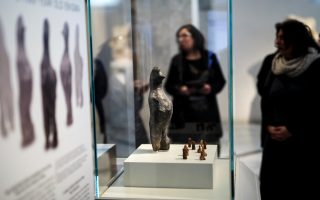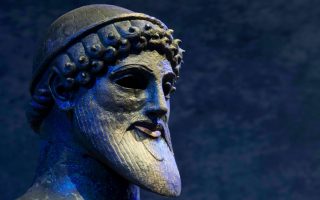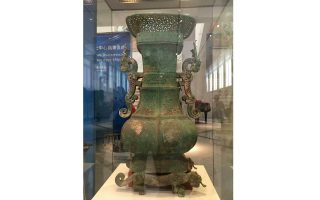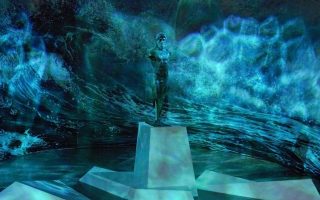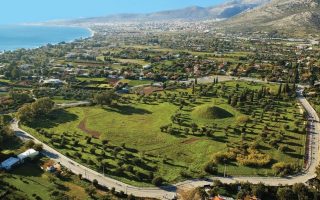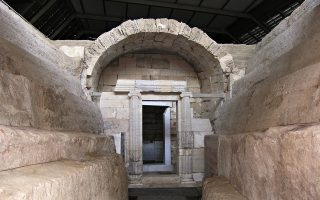The World War II adventures of an ancient lady
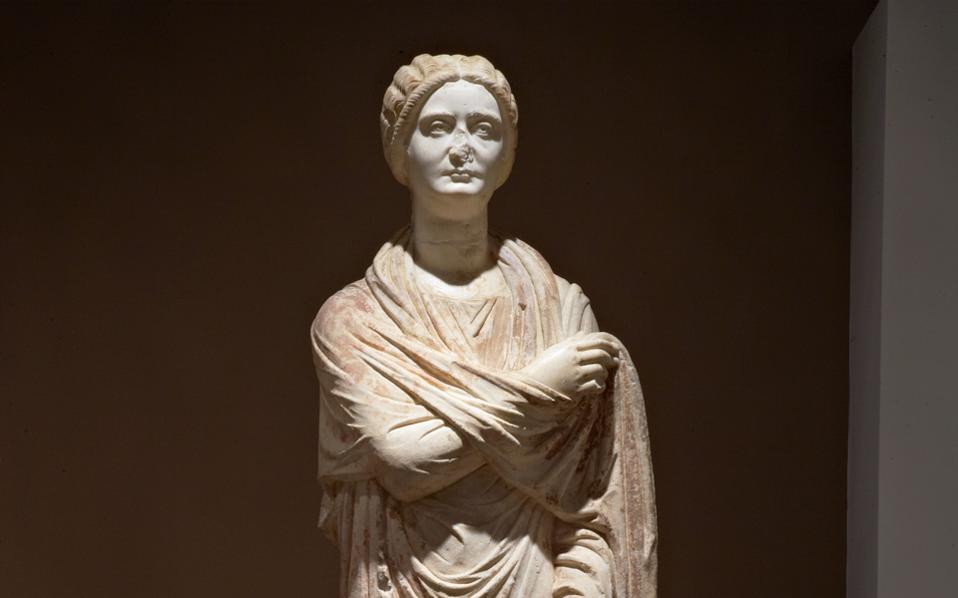
The Irakliotissa, an exquisitely carved Roman statue, was the first antiquity plundered during World War II to be repatriated to Greece 70 years ago. Housed in Thessaloniki’s Archaeological Museum, its fascinating journey back is charted by an ongoing exhibition at the Macedonian Museum of Contemporary Art (MMCA) titled “Divided Memories 1940-50.”
Its removal during the German occupation, efforts to locate and repatriate it, and a child’s memories of a statue from an exotic city that he heard about from his soldier father, make for a charming narrative.
The Irakliotissa’s adventures began in July, 1944, with its chance discovery during the digging of trenches at the Roman Agora, which served as a camp for Polish PoWs during the Nazi occupation of Greece.
For propaganda purposes, the Germans handed the statue over to Greek authorities in a ceremony at the Rotonda. A week after its discovery, though, an order came through in response to a telegraph sent by Adolf Hitler for the statue to be transferred to Germany. The argument was that since German troops unearthed it, the valuable find belonged to the German nation.
The statue was initially placed in Hitler’s personal museum in Linz but was moved out of the reach of air raids to a villa belonging to propagandist Joseph Goebbels. After the war ended, it was tracked to the Altaussee salt mines in Austria, found among many other artworks that had been plundered by the Nazis.
“Our abducted statue has been found in Austria,” a newspaper reported on October 31, 1945, adding that a German archaeology professor called G. Venzl had informed Greek authorities the Germans had hidden a statue in a salt mine, hinting that there were more Greek items of value there. Venzl also volunteered to take care of and return the items. Just a day after that report, however, another newspaper claimed that the statue was “in danger of being sent to America.”
The paper said that American soldiers had discovered the salt mine treasure and that the whole lot, including the statue, were in the process of being transported across the Atlantic.
The struggle for the statue’s repatriation, spearheaded by Thessaloniki’s antiquities curator Stylianos Pelekanidis, paid off as the allied forces transported the Irakliotissa to the Central Collecting Point in Munich, from where the Greek delegation picked it up and returned it to Thessaloniki in 1947.
According to experts, the female statue, standing 2.11 meters tall and with a similar hairstyle to that seen in depictions of the Empress Valeria Galeria, is a departure from trends prevalent in the period of the Four Tetrarchs (AD 293-313).
“The exceptional aesthetic of the face and of the body, with the long tunic and rich robe, marks a move away from the passionate forms of the Tetrarchy,” says archaeologist Efterpi Makri.
The statue depicts a prominent figure of Thessaloniki society, possibly Vevia Alexandra, a 3rd century AD high priestess, according to Tzeni Veleni, director of the Thessaloniki Archaeological Museum. She is certainly an aristocrat and possibly a sponsor of public works, adds Veleni.
The statue in her honor – created at a Thessaloniki workshop – possibly graced the Odeon. It would have been set up in a niche, which is why its back was unfinished.
The final part of the story on display at the MMCA involves the son of a German soldier who was at the statue’s excavation. The younger man appeared at the Thessaloniki Archaeological Museum demanding to see his father’s statue. He held a photo of the Irakliotissa in his hands that he inherited from his father – along with stories about Thessaloniki, a city depicted by the German soldier as exotic. The father had apparently mentioned the discovery of the statue as part of a story intended to conceal the fact that he was in the city not to work but to fight.
The show runs through April 30 at the MMCA, 154 Egnatia, tel 2310.240.002, www.mmca.org. The statue is on permanent display at the Archaeological Museum of Thessaloniki, 6 Manoli Andronikou, tel 2313.310.201, www.amth.gr
